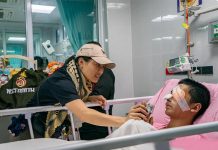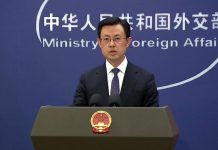The exhibition “Art on Farm: a diary from the Isan plateau”, organized by the Jim Thompson Art Center, will be held from March 31-June 24, 2012 to showcase artworks inspired by Isan culture.
The exhibition is a collective body of work from the Art on Farm projects from 2009 – 2011. For the project, the Art center invited local artists in the Northeast as well as visiting artists from other parts of the kingdom to produce works in the context of Eco Agriculture and North Eastern style architecture.
During their stay, artists were encouraged to work with local artifacts and recycled materials, to learn about the process of silk-making at the farm, and to observe the daily lives of the Jim Thompson Center employees. To produce their works, the artists also drew inspiration from the locals’ history, myths and legends, landscape and customs, and general ways of life.
The Exhibition Art on Farm: a diary from the Isan plateau features 17 artworks by 19 artists under the following subjects: way of life, history, customs and folk wisdom.
Featured artist included Dr. Apiradee Kasemsuk and Dr. Nattinee Karnchanaporn, Pitt Martliam, Sutthirat Supaparinya, Pratchaya Phinthong, and Worathep Akkabootara.
Ms.Krittiya Kawiwongse, Art Director of the Jim Thompson House, said that the project also aims to display a culture shift in the Northeastern region for the past 30 years. Migrations from the rural Northeast and elsewhere to Bangkok have transformed not only the Northeast but each region’s local identity and values. The changing relationship between the locals’ traditional way of life and their urban lifestyle at present is prominently reflected in artworks featured at the exhibition.
The project, she said, also allows contemporary local artists to explore and re-interpret their own history and culture through the use of local resources and materials. The works also highlighted the craftsmanship and uniqueness of resources found in the area. Visitors can expect to see elements of Isan culture from the past and present, interrelating between art and nature, in each of the piece on display.
Concerning the current government’s drive to develop a creative economy in Thailand, she said she hoped that the collection of these works can spur further recognition for the artistic and financial values of Isan’s local exports, which may propel more investment into the region.




